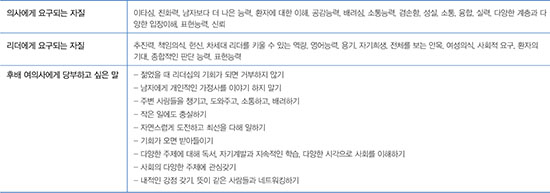This study was designed to explore women doctors' leadership experiences and to identify mechanisms of leadership development based on their experiences. Between November 1 and December 18, 2017, in-depth interviews were conducted with 12 women doctors whose professional roles included being the dean of a college of medicine, director of a university hospital system, director of a government institution, and member of the National Assembly. Twelve meaningful experiences were discovered, and 10 mechanisms and several action steps for developing women doctors' leadership were drawn from the interviews. Firstly, women doctors' leadership experiences can be divided into 4 periods: experiences before entering medical school, time during medical school, the training process, and experiences after completing board certification as a clinical specialist or PhD candidate. These periods were respectively designated as an unaffected leap, temporary break, involuntary interruption, and voluntary leap forward. Secondly, based on these results, 10 mechanisms for leadership development were identified. These included an intimate relationship with one's father, curiosity and concerns about various themes, accepting opportunities that arise, work-life balance from an individual perspective, promotion of social concerns regarding the under-representation of medical leaders, removal of traditional stereotypes about women doctors, remedies for invisible discrimination (glass ceiling) from a social perspective, as well as the provision of equal leadership experience and opportunities, the promotion of active mentoring, and the extension of formal and informal networks from an educational perspective. Currently, 25% of doctors are women, and they are not a token group any more. In order to resolve women's under-representation in medical leadership, practical and concrete efforts in individual, social, and educational domains, which are appropriate and adaptable to Korean culture, are needed.








 PDF
PDF ePub
ePub Citation
Citation Print
Print




 XML Download
XML Download